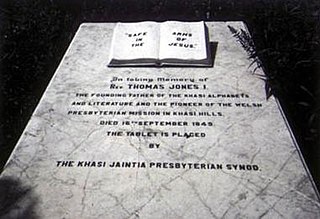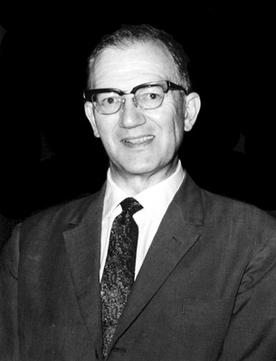
Shillong is a hill station and the capital of Meghalaya, a state in northeastern India. It is the headquarters of the East Khasi Hills district. Shillong is the 330th most populous city in India with a population of 143,229 according to the 2011 census. It is said that the rolling hills around the town reminded the British of Scotland. Hence, they would refer to it as the "Scotland of the East".

The Khasi people are an ethnic group of Meghalaya in north-eastern India with a significant population in the bordering state of Assam, and in certain parts of Bangladesh. Khasi people form the majority of the population of the eastern part of Meghalaya, that is Khasi Hills, constituting 78.3% of the region's population, and is the state's largest community, with around 48% of the population of Meghalaya. They are among the few Austroasiatic-speaking peoples in South Asia. The Khasi tribe holds the distinction of being one of the few remaining tribes that have a matrilineal society. Under the Constitution of India, the Khasis have been granted the status of Scheduled Tribe.
The Presbyterian Church of Wales, also known as the Calvinistic Methodist Church, is a denomination of Protestant Christianity based in Wales.

Henry Thomas Edwards was a Welsh preacher.

Griffith John was a Welsh Christian missionary and translator in China. A member of the Congregational church, he was a pioneer evangelist with the London Missionary Society (LMS), a writer and a translator of the Holy Bible into the Chinese language.

Nigel Jenkins was an Anglo-Welsh poet. He was an editor, journalist, psychogeographer, broadcaster and writer of creative non-fiction, as well as being a lecturer at Swansea University and director of the creative writing programme there.
John Hughes Morris (1870–1953) was a Welsh author and an administrator of Christian missions. He was born in Penrhosllugwy, Anglesey but moved to Liverpool as a young lad. He only received elementary education at Chatsworth School, Liverpool but he had considerable talent, and when he was 22 years of age he came to work at the office of the Foreign Mission in Falkner Street, near the Philharmonic Hall. This mission began in Liverpool in 1840 by the Presbyterian Church of Wales. Morris remained at this office till 1949, a period of 57 years.
John Nelson Hyde, known as Praying Hyde, was an American missionary who preached in the Punjab.
This article is about the particular significance of the year 1842 to Wales and its people.

Thomas Jones was a Welsh Christian missionary, who worked among the Khasi people of Meghalaya and Assam in India and of Bangladesh. He recorded the Khasi language in Roman script, and the inscription on his gravestone calls him "The founding father of the Khasi alphabet and literature".
The Presbyterian Church of India (PCI) is a mainline Protestant church based in India, with over one and a half million adherents, mostly in Northeast India. It is one of the largest Christian denominations in that region.
Tirot Sing, also known as U Tirot Sing Syiem, was one of the chiefs of the Khasi people in the early 19th century. He drew his lineage from the Syiemlieh clan. He was Syiem (king) of Nongkhlaw, part of the Khasi Hills. His surname was Syiemlieh. He was a constitutional head sharing corporate authority with his Council, general representatives of the leading clans within his territory. Tirot Sing declared war and fought against the British for attempts to take over control of the Khasi Hills.

The Khasi and Jaintia Hills are a mountainous region in India that was mainly part of Assam and Meghalaya. This area is now part of the present Indian constitutive state of Meghalaya, which includes the present districts of East Jaintia Hills district, headquarter Khliehriat, West Jaintia Hills district, headquarter Jowai, East Khasi Hills district, headquarter Shillong, and West Khasi Hills district, headquarter Nongstoin.
Dr. H. Gordon Roberts Hospital, Shillong, or KJP Hospital, is one of the oldest medical centres in Meghalaya. This Christian institution was founded by Dr. Hughes Gordon Roberts and is located in the city of Shillong in the north east of India.
William Williams was a Welsh Presbyterian missionary to Khasi Hills, northeast India, in the late 19th century. He was a son of a ship captain in Nanternis, a small village in Wales. Following his father's footstep he became a sailor for five years. Then he took a profession in carpentry for two years. After graduating in theology from East London Missionary Training Institute he became a pastor. Pursuing his ambition he became a missionary of the Welsh Calvinistic Methodist Foreign Mission to Khasi people in India from 1887 until his death. He died of typhoid in 1892.

Mawphlang is a village in the East Khasi Hills district of Meghalaya state in north-eastern India, 25 kilometers from Shillong. The word maw means "stone", maw phlang means "grassy stone," and is one of many settlements in the Khasi hills named after monoliths.

Dr. Robert Arthur Hughes, M.B.Ch.B, M.R.C.S., L.R.C.P., F.R.C.S., O.B.E., was a medical missionary for the Presbyterian Church of Wales who worked in Shillong from 1939–1969 at the Welsh Mission Hospital, also known as the Dr. H. Gordon Roberts Hospital, Shillong. Hughes trained as a surgeon in London prior to his time in India. He is called the "Schweitzer of Assam," comparing his missionary work to that of the Nobel Peace Prize winner Albert Schweitzer. During his 40 years in India, Hughes expanded the Welsh Mission Hospital and developed a traveling dispensary to aid those in the surrounding provinces. Hughes is best known for attempting to eradicate malaria from the area, introducing a vagus nerve resection process to alleviate pain from peptic ulcers and a rickets treatment in the infant population, recognising a protein calorie deficiency disorder called kwashiorkor in the Indian population, founding the area's first blood bank, performing the first lower segment Caesarean section without antibiotics to India, and expanding educational training for medical and nursing organisations.

The history of Christianity in Mizoram covers the origin and development of all forms of Christianity in Mizoram since the British occupation at the end of the 19th century until Indian Independance. Christianity arrived due to British intervention in tribal warfare, raids of British plantations. The ensuing punitive British military expedition was called the Lushai Expedition of 1871. The subsequent annexation of the erstwhile Lushai Hills to the British Empire opened the gateway for British Christian missions to evangelise the Mizo people.

Gwalia in Khasia is a 1995 travelogue by Welsh author Nigel Jenkins. Published by Gomer, it won the Wales Book of the Year in 1996.

Annie Florence Evans known as Florrie Evans was a Welsh revivalist, and later missionary, who was credited with starting the 1904–1905 Welsh revival.













